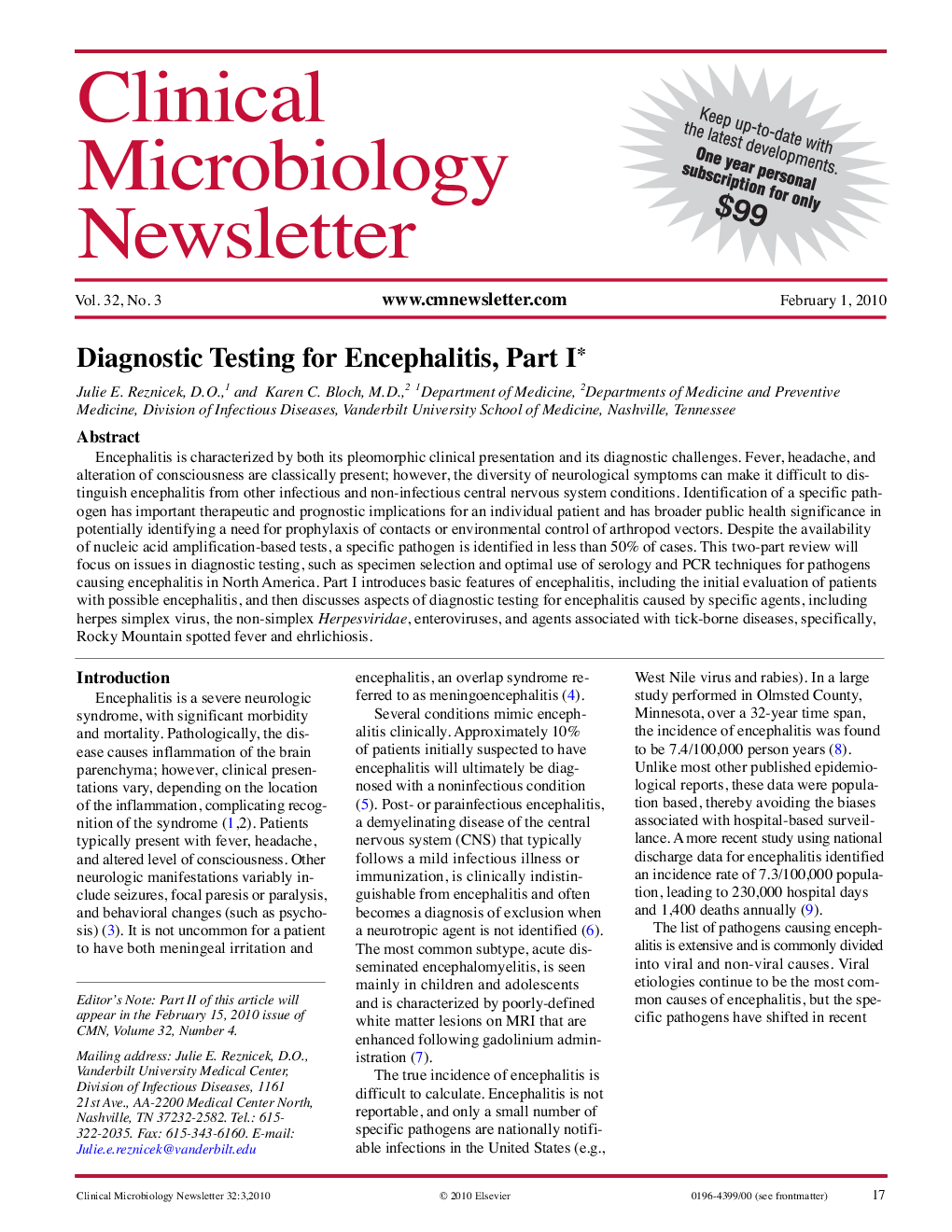| Article ID | Journal | Published Year | Pages | File Type |
|---|---|---|---|---|
| 3345372 | Clinical Microbiology Newsletter | 2010 | 7 Pages |
Encephalitis is characterized by both its pleomorphic clinical presentation and its diagnostic challenges. Fever, headache, and alteration of consciousness are classically present; however, the diversity of neurological symptoms can make it difficult to distinguish encephalitis from other infectious and non-infectious central nervous system conditions. Identification of a specific pathogen has important therapeutic and prognostic implications for an individual patient and has broader public health significance in potentially identifying a need for prophylaxis of contacts or environmental control of arthropod vectors. Despite the availability of nucleic acid amplification-based tests, a specific pathogen is identified in less than 50% of cases. This two-part review will focus on issues in diagnostic testing, such as specimen selection and optimal use of serology and PCR techniques for pathogens causing encephalitis in North America. Part I introduces basic features of encephalitis, including the initial evaluation of patients with possible encephalitis, and then discusses aspects of diagnostic testing for encephalitis caused by specific agents, including herpes simplex virus, the non-simplex Herpesviridae, enteroviruses, and agents associated with tick-borne diseases, specifically, Rocky Mountain spotted fever and ehrlichiosis.
